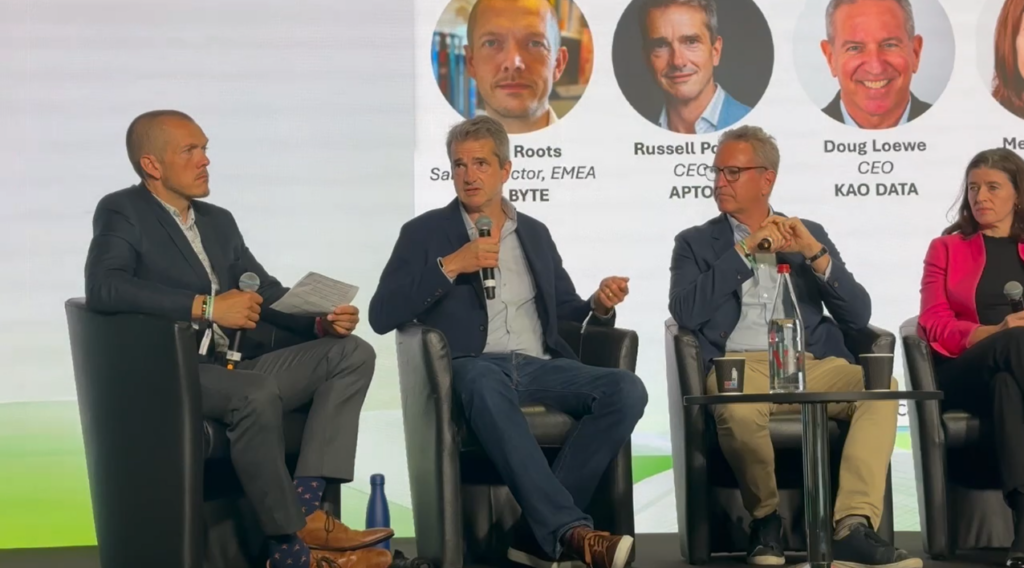Insights from Datacloud Global Congress 2025
By Russell Poole, CEO, Apto
At Datacloud Global Congress 2025 in Cannes, I joined a panel tackling one of the most important questions in our industry right now: are we breaking the reliance on traditional availability zones?
If you’ve been trying to source capacity in Europe or mapped hyperscale deployments this past year, the answer will feel obvious. Yes, the tide is turning. The conversation has shifted from where do we want to be? to where can we actually build? This shift isn’t a sudden reaction, it’s been in the making for years.
With demand for digital infrastructure continuing to escalate, the pace of change in deployment patterns is picking up fast. The question now is: what does the next chapter look like?

From my seat, and from the conversation on stage, three themes stood out:
1. Power has become the defining factor
At Apto, we’re seeing demand shaped, first and foremost, by power: where it exists, how quickly it can be delivered and how secure and scalable it will be long-term. We’ve long known that power is critical. But now, it’s the decisive factor and its scarcity is reshuffling the map.
We didn’t invent this pivot. Hyperscalers and colocation operators have been quietly moving into alternative markets for some time. What’s changed is speed and scale.
Power availability now outranks fibre, incentives, even land. And when you consider the rising density of workloads and the role of liquid cooling in next-gen deployments, it’s not just about megawatts – it’s about the quality and consistency of supply.
Many new workloads with enormous density requirements, particularly AI, are arriving fast. That level of intensity is forcing developers to move fast and build differently.
JLL’s recent 2025 EMEA Data Centre Report confirms the trend: core European markets grew by 13.2% in 2024, and demand continues to outstrip supply. Simultaneously, secondary markets like Madrid, Berlin and Warsaw recorded ~49% expansion, spurred by better grid access and reduced competition
Meanwhile, global data centre demand for power is surging and forecast to nearly triple by 2030, from around 60 GW today to over 170–220 GW, driven largely by AI and cloud growth.
This means new geographies are in play. As one speaker put it, the so-called ‘second belt’ isn’t second anymore. They are now the front-runners.
2. Built-in flexibility is now a baseline requirement
Whether you’re supporting cloud, AI or both – today’s infrastructure must be ready to adapt. That message came through loud and clear during the panel.
It’s no longer enough to design for a single workload type. Data centres now need to accommodate a wide range of density requirements, supporting both air and liquid cooling and factoring in heat reuse from day one. At Apto, we’ve made this kind of flexibility central to our approach.
The ability to serve mixed workloads within the same facility, and to pivot quickly between applications, is becoming a must-have. AI clients in particular are demanding rapid turnarounds and simplified solutions.
Hyperscalers are prioritising partners who can move fast and remove friction. They’re looking for the best combination of location, speed to market and future expansion options.
3. Industry voices need to get louder and more united
One of the most energising parts of the discussion was the consensus that we can’t keep waiting on governments to fix the challenges around energy pricing, permitting or regulatory reform. We have to show up with solutions.
Whether it’s educating policymakers, co-developing grid strategies with utilities or strengthening national data centre associations – this is a moment to organise.
Speakers from across the ecosystem shared examples of what’s working: in Southern Europe, some regional authorities are outpacing their capital cities by simplifying planning and prioritising energy infrastructure. Regions like Aragon are gaining momentum because they’ve made development easier, not just cheaper.
The takeaway? Securing sites isn’t just about land and power. It’s about local relationships, understanding regulation and acting as a trusted partner in growth.
At Apto, we believe in partnering locally from day one, in every market. It’s how we’re building in Athens. It’s how we’ll grow in Milan. And it’s how we’ll continue to unlock capacity where it’s needed most.
A final thought
Availability zones may not disappear, but they are no longer the only game in town. We’re entering an era where new regions, new energy models and more agile ways of building – and that opens up new opportunity.
What’s clear is that these decisions are increasingly driven by customer strategy. Many hyperscalers are rethinking their regional deployment models based on where power, permitting and timelines align, and they’re doing so in close dialogue with their partners.
At Apto, we’re working in step with our customers. When we talk about building with purpose, this is what we mean: helping turn strategic intent into scalable infrastructure – delivering the right capacity, in the right places, at the right time.



